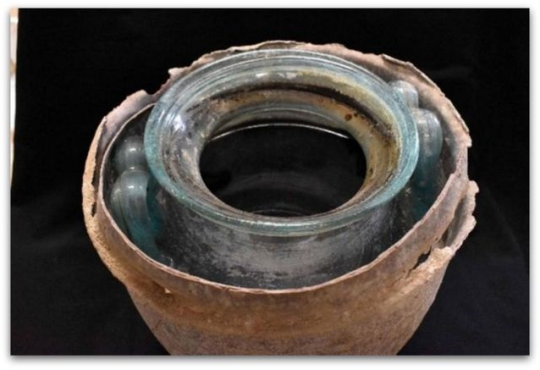Scientists in a cave 64 kilometers deep discovered something amazing “Someone was there before us”

Our world is full of fascinating, dangerous, but also beautiful fissures that lead deep below the Earth’s surface.
Caves evoke a sense of awe and present us with a peaceful, completely alien world.
One of the most spectacular groups of caves is the Saint-Marcel Cave in France. People have inhabited the entrance to that cave for millennia, since the Middle Paleolithic.
This complex of caves stretches for at least 64 kilometers. Since it has been inhabited since ancient times, this cave is of great interest to anthropologists.
Scientists led by geomorphologist Jean-Jacques Dellanoy from the French National Center for Scientific Research encountered a puzzle, reports Science Alert.
Map showing the location of a cave chamber with broken speleothems. (Delannoy et al., J. Archaeol. Method Theory, 2024)
Deep in the dark
Deep inside the cave, beyond a dangerous path covered with deep pits, they found broken stalagmites more than 1.5 kilometers from the entrance, indicating that people were present there eight thousand years ago. Even by today’s standards, which include safety equipment, sophisticated tools and bright lighting, pits are considered very dangerous.
This begs the question: How did ancient people access this site and how did they get out again?
The part of the cave that Dellanoy and his colleagues explored has been known for some time. The earth is covered with broken rock formations that scientists call speleothems. In the 19th century it was common for visitors to the caves to break off the stalactites and take them as souvenirs. Until now, the stones at Saint-Marcel were thought to have been chipped away by tourists, but Dellanoy’s team discovered traces of ancient people.
Based on the way the water shaped the fractured speleothems, the scientists were able to infer approximately when they were broken off, but they further supported the research by analyzing the percentage of uranium and thorium in the rocks. Thorium is an indicator of uranium that decays over time, so this method can be used to determine the age of minerals.
The largest of the structures, made of broken stalagmites (purple) and stones (orange). (Delannoy et al., J. Archaeol. Method Theory, 2024)
It is impossible to imagine
Using this method, scientists found that the first stone was broken off approximately ten thousand years ago, and the most recent stone was broken off three thousand years ago. Also, some broken speleothems were placed in a meaningful way, indicating human presence.
“Our research is changing the way we look at the Saint-Marcel cave. It gives it a new cultural dimension. “The discoveries here make us think about ancient communities, how they used caves and how they faced the dangers of caves,” Dellanoy concludes.







